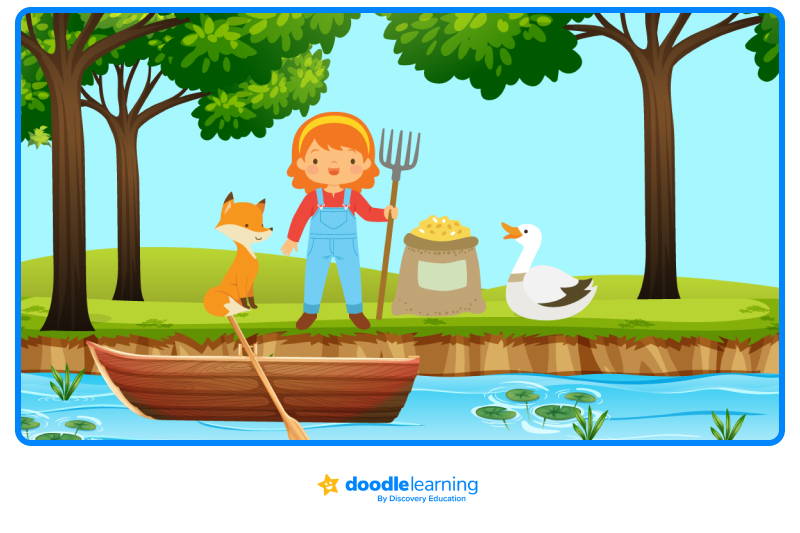Improve problem-solving skills with these fun brain teasers

Author
Carla Greenwood

Expert Reviewer
Jill Padfield
Published: July 2024


Improve problem-solving skills with these fun brain teasers

Author
Carla Greenwood

Expert Reviewer
Jill Padfield
Published: July 2024




Improve problem-solving skills with these fun brain teasers

Author
Carla Greenwood

Expert Reviewer
Jill Padfield
Published: July 2024


Key takeaways
Table of contents
Have you ever heard your kids say any of the following? :
Maths is boring.
Maths is too difficult, I don’t get it!
I don’t like maths.
Though this reaction is fairly common, there is a solution! Maths brain teasers encourage out-of-the-box thinking in a fun and engaging way. They often require logical thinking rather than needing a child to be a maths expert. So, many kids don’t even realise they’re learning.
Maths brain teasers are a great way to relax students at the beginning of a class and to inspire a love of learning at home.
Maths brain teasers are a form of game-based learning that have many benefits for young minds if practised regularly.
Here are some of the ways that maths brain teasers can aid child development:
Whether children are tackling maths riddles or visual maths puzzles, brain teasers develop cognitive skills which can improve academic performance and general life skills.
Unlock unlimited maths questions
Put your learning into practice with fun exercises + games that are proven to boost ability!
Get 2 FREE weeks of Doodle!
Use code 2WKS_2026 to enjoy unlimited questions and games
Get 1 FREE month of Doodle!
Use code MONTH_2026 to enjoy unlimited questions and games
Try DoodleMaths for Free!
Select a year group
Now, let’s dive into some of the different brain teasers you can try out with your children:
The answer is three because that’s how many apples you took.
The answer is wind.
The answer is 11 containers:
7 large boxes (7×8=56 boxes)
4 small boxes (4×10=40 boxes)
Therefore the merchant shipped 96 boxes in 11 containers.
The answer is zero.
The answer is two: inside and outside.
Hint: It’s not nine!


Practise maths with DoodleMaths!
Looking for more ways to make maths fun? DoodleMaths is an award-winning maths app that’s proven to double a child’s rate of progression with just 10 minutes of use a day!*
Filled with fun, interactive questions aligned to the national curriculum, Doodle creates a unique work programme tailored to each child’s needs, boosting their confidence and skills in maths.

*Based on earning 24 stars a day in DoodleMaths. Read full study

The answer is three. The grandmother is also a mother and the mother is also a daughter. So, there were only three people.
The answer is once. This is because when you subtract five from 25 it becomes 20. So, from here on, you are no longer subtracting from 25.
The answer is a 50/50 chance. There are two sides to a coin, so every throw has a 50% chance of landing on heads. The number of throws doesn’t make a difference in the chance of each throw.
The answer is the letter N.
A farmer is traveling with a fox, a goose, and a sack of beans. He comes across a river with a boat, but he can only take one item with him at a time.
If he leaves the goose with the fox, the fox will eat it. If he leaves the goose with the beans, the goose will eat them. How does he get everyone across safely?

Here’s the step by step solution to the problem:
The answer is 888+88+8+8+8=1000. The trick to this riddle is to find the closest number to 1000 using only 8s (888). From there it’s easier to work out the rest.

The answer is the glass with the paperclip inside. All of the glasses look like they have the same amount of water in them. But, this doesn’t take into account the weight of the objects inside the glasses. If you remove the larger objects, the water will go down more than if you remove smaller objects. We don’t know the exact size of each item but we can work out that the paperclip is definitely the smallest.

The answer is 1.
Hint: This maths brain teaser uses addition.

The answer is 17 because each circle is the total of the two digits in the opposite quadrants:

The answer is three. Even in the worst case scenario, you will pick out one black sock and one white sock. So the third one you pick is bound to match one of them.
The answer is short. When you add the letters e and r, the word becomes “shorter.”
The answer is breath. No one can hold their breath for longer than a few minutes, not even the strongest person in the world.
The answer is the ground floor. Everyone living on the other floors will still need to call the elevator there to then get to their own floors.
The answer is 12 cups. First, you need to work out what 75% of 100 ml is, which is the same as ¾. This would be 75 ml. Then, simply divide 900 by 75 or work out how many times 75 fits into 900:
75+75+75+75+75+75+75+75+75+75+75+75 = 900
or
900 ÷ 75 = 12
The answer is 65. When you divide by a fraction it actually turns into a multiplication. So you need to multiply 30 by 2, which gives you 60. Then, add 5 and you end up with 65.
The answer is £20. The method is adding £5 for each letter in the name of the item. The word coat has four letters which means the equation would be 4×5=20.
The answer is a decimal. 6.7 is greater than 6 but less than 7.

The answer is 87. Turn the image upside down and you will see that the parking lot numbers run in sequence: 86, 87, 88, 89, 90, 91.
The answer is three sheep, two goats, and one horse. He says that he has all sheep except three. So, we know that these three animals must be goats and horses. He also says that he has all goats bar four and all horses bar five.
goats + horses = 3
horses + sheep = 4
sheep + goats = 5
Use guess and check to figure out what combination of numbers satisfy these equations. Through this process, we find that he has one horse, two goats, and three sheep.
The answer is five children. The daughters all have the same brother.
The answer is that she was born on February 29th in a leap year. This only happens every four years.
The answer is 22+(2➗2) = 23. This may look like a complex problem but remember, in maths, we always start by answering the equation in the brackets. So, 2➗2 = 1. Now we can finish the equation:
22+1 = 23
The answer is 2+5 = 3+4. Both 2+5 and 3+4 equal 7.
The answer is that there are only three family members eating breakfast: a grandmother (also a mother), a mother (also a daughter), and a daughter.
There are two possible answers: 141 and 582. For 141, the number 1 is 3 less than 4, and the number 4 is four times greater than the number 1. For 582, 5 is 4 less than 8 and 8 is four times greater than 2.
The answer is 55. If the number of flowers doubles every day, then half of the garden filled on the 55th day would result in the whole garden filled with flowers the next day because ½ + ½ = 1 whole.
2+2 = 44
3+3 = 96
4+4 = 168
5+5 = 2510
Then what is 6+6?
The answer is 3612. The answer is the number multiplied by itself (6×6=36) combined with the number added to itself (6+6=12).
The answer is eight because the rest of them ran away.
The answer is four turtles and three tanks. One turtle in each tank would result in an additional turtle with no tank. Two turtles in each tank would leave the third tank spare.
The answer is a rectangle. It has two sets of equal opposite sides.
The answer is 20 times (8, 18, 28, 38, 48, 58, 68, 78, 80, 81, 82, 83, 84, 85, 86, 87, 88(2), 89, 98).
The answer is nine. Simply add four and five together.
The answer is seven because a hexagon has six sides.
Brain teasers help children to develop a range of important life skills including problem-solving, critical thinking, and memory retention. Fun brain teasers also encourage children to persist with a problem and increase confidence.
Brain teasers require children to look at a problem from all angles and consider an alternative perspective. By regularly practising brain teasers, children learn how to analyse small details and use logic to solve an issue they’re facing.
Brain teasers have many benefits for children. However, it’s important to start slow to prevent your child from getting frustrated. Once your child has mastered the basics, then they can move on to more complicated brain teasers.
Brain teasers are a great way for children to develop essential life skills that will improve academic performance as well as persistence and dedication. Moreover, brain teasers are beneficial for people of all ages, including college-age students and adults, since they improve memory and encourage critical thinking.


Parents, sign up for a DoodleMaths subscription and see your child become a maths wizard!

Lesson credits

Chal Emery
Chal Emery is a writer who enjoys long drives through spectacular country, hanging out with his friends, and spending time getting lost in a decent film or TV show.

Jill Padfield
Jill Padfield has 7 years of experience teaching mathematics. She is currently working as a Business Analyst, working to improve services for Veterans while earning a masters degree in business administration.

Chal Emery
Chal Emery is a writer who enjoys long drives through spectacular country, hanging out with his friends, and spending time getting lost in a decent film or TV show.

Jill Padfield
Jill Padfield has 7 years of experience teaching mathematics. She is currently working as a Business Analyst, working to improve services for Veterans while earning a masters degree in business administration.
Book a chat with our team
If you’d like to use Doodle’s browser version, please visit this page on a desktop.
To log in to Doodle on this device, you can do so through our apps. You can find out how to download them here: